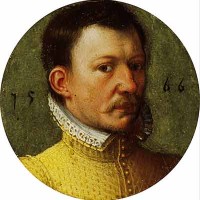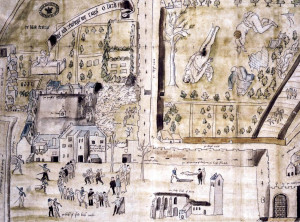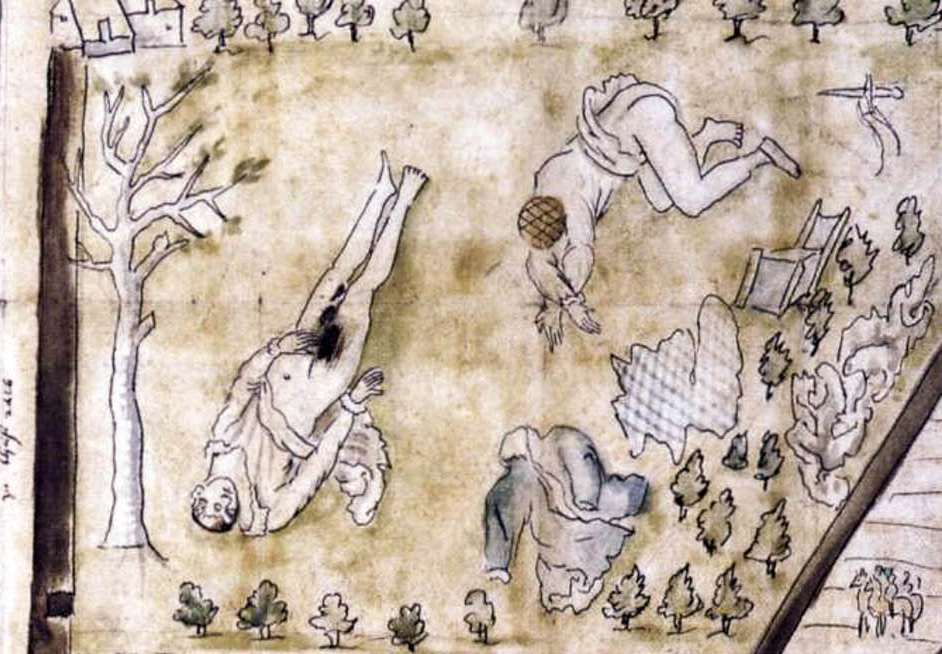Was Mary Queen of Scots involved in the murder of her husband Lord Darnley?

When trying to understand the life of Mary Queen of Scots, generations of historians have puzzled over one important question – was Mary involved in her husband Henry Stuart, Lord Darnley‘s murder? The answer has always polarised historians.

4th Earl of Bothwell
The contemporary view, at the time, was that Mary was involved in a crime of passion with James Hepburn, 4th Earl of Bothwell, who undertook the murder so that he could marry her. The fact that Mary allowed Bothwell’s trial to be arranged as a whitewash seemed to tell against her.
More modern assessments have seen Mary as a complete innocent, vilified by those around her in an effort to prevent her, as a Catholic, from remaining on the Scottish throne, and being accepted as heir to Elizabeth in England. Yet this does not explain why she would fail to arrange a proper investigation of the murder at Bothwell’s trial and why she should agree to marry him, when she had been told in several quarters that he had organised it.
There is another complexity. Why should the Scottish nobility encourage Bothwell, the man that they hated, to marry Mary, even signing a Bond with him at Ainslie’s Tavern, and then to use all possible persuasion to make her agree? Her Secretary of State, William Maitland, who had every reason to detest Bothwell (for not releasing estates back to him at the end of his attainder), almost single-handedly encouraged her to agree to the marriage. This made Bothwell the most powerful man in Scotland and demoted James Stewart, Earl of Moray, from the expectation of taking control of Government. Despite all this persuasion, when the couple agreed to marry, the nobles suddenly turned against them and took up arms. If their objective was just to be rid of Bothwell, they only needed to plant rumours of his involvement in the murder.

The nobles’ objective then was to remove both Mary and Bothwell. Yet there is no plausible evidence of Mary playing any part in her husband’s murder. She had asked them to arrange her divorce from Darnley. When it became clear that a Catholic annulment could not be achieved without making her son, James, illegitimate, she decided to make a go of the marriage, as all her actions at Kirk o’ Field confirm. She probably wanted to keep him under a loose form of house arrest, but their continued marriage would protect their unassailable dynastic claim to the English throne (he was in line to the English throne after Mary and their son James) and might provide more children to protect their dynasty. Unfortunately this was not acceptable to the Scottish nobles. They wanted him dead.
The nobles’ plan was entirely devious, and it is possible to detect William Cecil, the English Secretary of State, pulling the strings in the background (and taking an inordinate interest in what was going on). If Bothwell could be persuaded to marry Mary after he had organized Darnley’s murder, it would make a crime of passion seem credible. The whole idea was pre-planned. Within a week of the murder, Placards appeared in Edinburgh accusing Bothwell and implicating Mary – far too quickly for the news to have reached Cecil in London and for him to have confirmed approval.
The Nobles had to ensure that Bothwell was found innocent at his trial. Mary was foolish not to seek evidence, but everyone persuaded her not to dig too deeply into the murder. The Nobles only wanted to encourage the marriage as the means of bringing them both down. As soon as Mary and Bothwell were committed, they turned against them. George Buchanan fleshed out a completely scurrilous tale of a long running affair, when he had no personal evidence to support it. Some of Mary’s correspondence was manipulated, probably by Maitland, to provide the so called ‘Casket Letters’ to be used as evidence at an enquiry. Inevitably it was flawed. Although it was tabled at the Conference at Westminster, it was ‘huddled up’ by Cecil to prevent it being subject to cross-examination. Mary was never found guilty, but the smear campaign was enough to justify retaining her under house arrest in England.
Mary had certainly been naïve, but she thought she was doing what her nobles were advising for the good of Scotland. There is no plausible evidence that she loved Bothwell, or that she had any involvement in approving Darnley’s murder.
My books “The Challenge to the Crown” and “The Survival of the Crown“, provide further detailed evidence to confirm this explanation.

